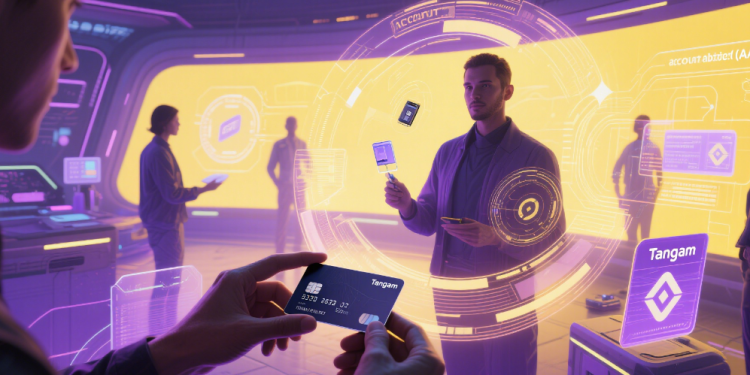In an era where centralized exchanges face increasing scrutiny due to hacks, regulatory uncertainties, and insolvencies, self-custody has emerged as the bedrock of true crypto ownership. This practice, rooted in the principle of “not your keys, not your coins,” empowers users to store their private keys independently, eliminating reliance on third parties. As the crypto landscape evolves, understanding self-custody is essential for anyone seeking financial sovereignty. In this comprehensive guide, we delve into its mechanics, risks, and best practices, backed by industry trends and expert insights.
Understanding Self-Custody: The Foundation of Crypto Ownership
Self-custody refers to the direct management of your crypto assets through personal control of private keys—a unique alphanumeric code that grants access to funds on the blockchain. Unlike custodial services (e.g., exchanges or banks), which hold your keys and assets, self-custody places full ownership in your hands. This model aligns with the decentralized ethos of cryptocurrencies, ensuring no single entity can freeze, seize, or restrict your funds .
For instance, the Self-Custody Account offered by platforms like Numbrs provides offline storage in Swiss data centers, combining cutting-edge security with user autonomy. Such solutions prioritize multi-signature authentication and air-gapped servers, safeguarding against hacks and unauthorized access . By eliminating intermediaries, self-custody also enhances privacy, as users avoid sharing personal data with centralized platforms.
The Risks of Third-Party Custody and Why Self-Custody Matters
Centralized custodians, while convenient, expose users to significant risks. In the first half of 2024 alone, hackers stole $1.38 billion from crypto platforms—a 110% increase from the previous year . High-profile incidents, such as the $300 million hack of Japanese exchange DMM Bitcoin, highlight vulnerabilities in third-party systems. These attacks often exploit stolen private keys or address poisoning, underscoring the fragility of centralized storage .
Moreover, exchanges can freeze accounts or face regulatory penalties, as seen in the aftermath of the 2022 FTX collapse. By contrast, self-custody eliminates counterparty risk, ensuring your assets remain accessible even if an exchange fails. As OKX Chief Business Officer Lennix noted at the 2025 Hong Kong Web3 Carnival, self-custody is “the future of Web3,” enabling users to bypass centralized bottlenecks and embrace true decentralization .

Methods of Self-Custody: Hardware, Software, and Beyond
Hardware Wallets: The Gold Standard
Hardware wallets like Trezor Safe 3 and Ledger Nano S Plus are physical devices that store private keys offline. These wallets support thousands of cryptocurrencies and integrate with DeFi platforms via WalletConnect, offering both security and usability. For example, the Trezor Safe 3 features an EAL 6+ certified secure element and Shamir backup, making it ideal for high-value assets . The BitBox02, with its minimalist design and multi-signature support, caters to Bitcoin purists and multi-asset holders alike .
Software Wallets: Convenience with Caution
Software wallets, such as MetaMask and Exodus, store keys on devices like phones or computers. While convenient for daily transactions, they are vulnerable to malware and hacking. To mitigate risks, users should enable 2FA, use strong passwords, and avoid storing large sums on connected devices .
Paper Wallets and Air-Gapped Solutions
Paper wallets—physical documents with public and private keys—offer extreme security but lack recoverability if lost. More modern air-gapped solutions, like Cypherock X1, combine offline storage with sleek design, ensuring resilience against physical damage .
MPC Wallets: Balancing Security and Control
Multi-party computation (MPC) wallets split private keys across multiple entities, reducing single-point failure risks. This hybrid model, adopted by platforms like XBIT, allows users to retain control while complying with regulatory requirements through modular KYC options .
Challenges in Self-Custody: Mitigating Risks and Building Resilience
While self-custody offers unparalleled control, it demands responsibility. The most critical risk is private key loss, which can result in permanent asset forfeiture. Human error, such as miswriting recovery phrases or storing keys insecurely, compounds this risk . Additionally, navigating complex security protocols—like setting up multi-signature wallets or staying updated on phishing scams—can overwhelm less tech-savvy users.
Regulatory compliance also poses challenges. As governments enforce stricter AML/KYC rules, self-custody platforms must balance decentralization with accountability. OKX’s approach, for example, uses chain analysis tools to monitor suspicious activity while maintaining user privacy .
Best Practices for Secure Self-Custody in 2025
- Use Hardware Wallets for Long-Term Storage
Store large holdings in devices like Ngrave Zero, which combines EAL 7 certification with biometric security . Keep wallets in fireproof safes and secure recovery phrases in multiple, geographically dispersed locations. - Adopt Multi-Signature (Multisig) Wallets
Require multiple keys to authorize transactions, reducing the impact of a single compromised key. Platforms like BitBox02 and Trezor Safe 3 support multisig for enhanced protection . - Regularly Backup and Test Recovery
Create encrypted backups of seed phrases and test restoration periodically. Tools like Shamir’s Secret Sharing can split keys into shares, minimizing loss risks . - Stay Informed and Educated
Follow industry updates on vulnerabilities and emerging threats. Platforms like Bitora provide actionable insights to help users navigate evolving security landscapes. - Leverage MPC for Compliance
For institutional users, MPC wallets offer scalable solutions that meet regulatory demands without sacrificing control .
The Future of Self-Custody: Trends and Innovations
As self-custody gains traction, innovations are addressing usability and scalability. Account Abstraction (AA) technology, integrated by platforms like XBIT, simplifies multi-chain interactions by abstracting complex key management . Meanwhile, hardware wallets are evolving to support broader ecosystems—for example, Tangem’s credit card-sized wallets now handle over 6,000 assets across 78 networks .
The rise of decentralized identity solutions further enhances self-custody by enabling secure, permissionless access to Web3 services. These trends, coupled with growing distrust in centralized systems, suggest self-custody will become the norm rather than the exception.
Conclusion: Empower Your Crypto Journey with Self-Custody
Self-custody is not just a technical choice—it’s a statement of financial independence. By taking control of your private keys, you safeguard your assets against hacks, regulatory overreach, and systemic failures. While challenges exist, adopting best practices and leveraging tools like hardware wallets and MPC solutions can transform self-custody into a seamless, secure experience.
At Bitora, we’re committed to equipping you with the knowledge to navigate this landscape confidently. Stay ahead with our crypto insights, and embrace the future of decentralized finance—where your assets are truly yours.
Stay ahead with Bitora’s crypto insights.



























